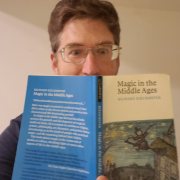If there is any word that characterizes the modern situation, it is rapidity. Not only do we live at a time when information can be sent at almost unimaginable speeds, but recent leaps forward in technological innovation has resulted in quick changes in the structures that order social life.
To understand this phenomenon, my friend and collaborator, Joshua Pauling, draws on the work of Harmut Rosa. In a recent article for Mere Orthodoxy, Pauling writes that
Rosa notes three primary areas where this acceleration is occurring: technological change, social change, and the pace of life. Together these forces form “the experience of acceleration and shortage of time that stands at the center of the modernization process,” which Rosa sees as a self-reinforcing feedback loop, a “circle of acceleration.” Jonathan Trejo-Mathys explains in his Translator’s Introduction to Rosa’s work, that “technical acceleration tends to increase the pace of social change, which in turn unavoidably increases the experienced pace of life, which then induces an ongoing demand for technical acceleration in the hopes of saving time, and so on back around the circle.”
Pauling argues that the solution may lie in returning to life on a human scale. Drawing on Tolstoy and Kosuke Koyama, Pauling offers a beautiful reflection of ways we can push back against the culture of rapidity—what he calls “terminal velocity”—to attend with love and care to those with whom we are present. Read his whole piece, “Terminal Velocity is Digital Velocity: How Information Immediacy Distorts Scale, Time, and Pace.”


